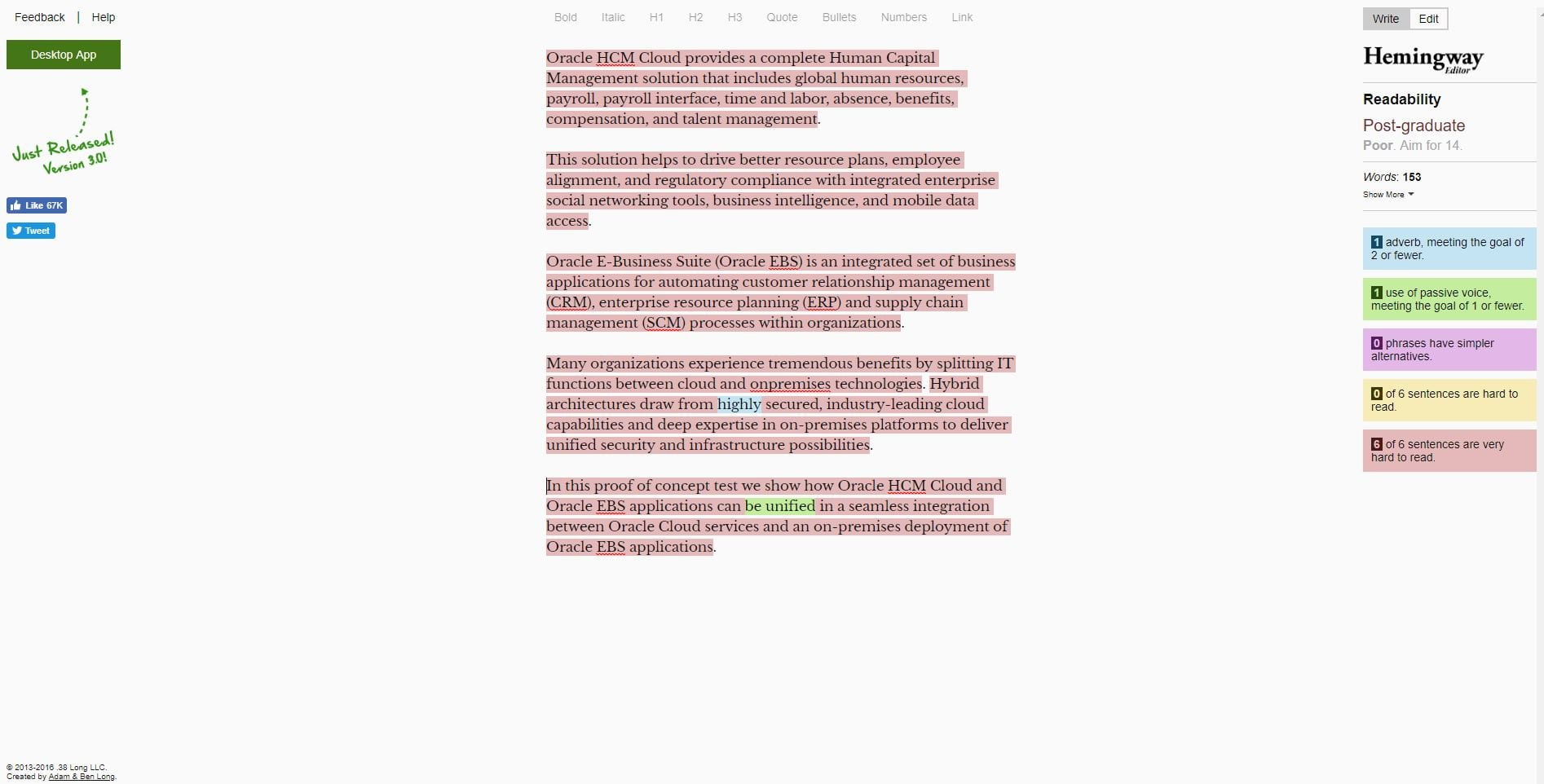

Hemingway’s style lends itself well to blogs and journalism. Say what you mean, say it precisely, and say it quickly. Concision – A brief sentence always beats a long one.The unspoken negatives create mystery, but they also make the reading experience less boring and easier to read. Positivity – Hemingway avoids telling you what isn’t happening and instead focuses on what is.Single syllable words create a cadence or rhythm for the reader that can be very hard to break away from. Simplicity is aiming to use shorter words. Simplicity – Simplicity means never using a complex word when a simple one will do.I think you can break down the style into three focal points:

One blogger wrote a great piece about Hemingway’s style and how/when to use it. You can find lots (and lots) of articles and books about how Hemingway wrote. But the readability grade is a nice, quick way to see how your writing stacks up to the reader’s expectations. The rest of the information is basic data almost all word processors can offer. The app aims for a Grade 5 or 6 level – the reading level most readers prefer. You’ll find this score in the sidebar, above the summary of highlighted sections. The formula uses grade levels based on US school system grading to tell you how ‘readable’ your writing is. The score is based on the Flesch–Kincaid readability formula. Even if you don’t ascribe to Hemingway’s ‘simple’ style, lines marked in red are probably going to confuse at least some readers.Īside from the five highlighted suggestions, Hemingway Editor gives a readability score. These are the most complex and problematic sentences. You should look to finish your Hemingway App edits with ZERO red marks. From my testing, these sentences are almost always long, run on monstrosities that should be at least two or more individual sentences. Red Editsįinally, Hemingway Editor shows you very difficult to read sentences. It’s still helpful to be aware of any sentence that might be hard for readers to understand. A difficult sentence isn’t always a problem. I think yellow edits are the ones most easily ignored. You’ll often see some purple highlights in difficult sentences too suggesting that part of the problem may be the complexity of the sentence and not just length. These suggestions are helpful in finding long or arduous sentences. Yellow highlights will pick out entire sentences the Hemingway app finds hard to read. Using ‘shall’ here might be a choice to illuminate the character. But the line is dialog, so we need to tread carefully. In the example above, replacing ‘shall’ with ‘must’ or ‘will’ simplifies the sentence. Purple edits suggest edits inline, just like blue edits. The goal is to make your writing simple and understandable. The purple edits are the most Hemingway-esque of all the suggestions you’ll see. Suggestions in purple show a complex word with a simpler alternative. But it shows how much tighter the simple sentence can be. She took down a jar labeled ‘ORANGE MARMALADE.’ Empty, to her great disappointment.Now let’s rewrite it with an active voice: She took down a jar from one of the shelves as she passed it was labelled ‘ORANGE MARMALADE’, but to her great disappointment it was empty.For example, consider this sentence from Alice: Passive writing tends to be longer and less impactful. The green edits show passive voice sentences. I particularly love that the suggestion most often seen for adverbs is ‘omit.’ As we all know, adverbs are a mistake 99 times out of 100. Hemingway Editor has exceptional inline suggestions for adverbs too. Removing or improving your weak words will make the writing that much stronger. Most writing doesn’t need any words to modify verbs. Words or phrases highlighted in blue show weak words, generally adverbs.


 0 kommentar(er)
0 kommentar(er)
